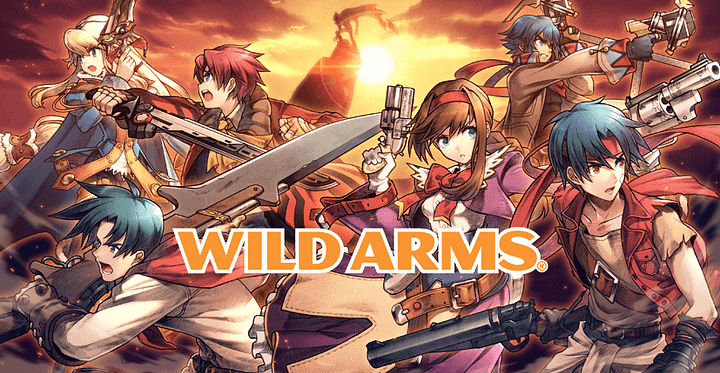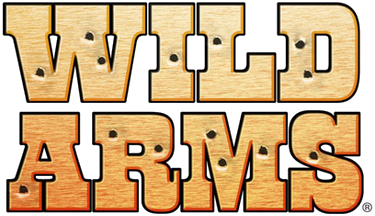Celebrating Wild Arms: The Wild West RPG
Saluting a unique and fascinating classic

When you think of the Wild West, you’re either thinking about the American Frontier, which inspired many Western-themed movies about cowboys and Indians from the 17th century, or a slew of films that have engrained the thematic settings of the Wild West as something your brain instinctively recognizes. Whether history or movie, the Westernized settings of the Old West have never grown old in media and continue to be a staple for adventure across different mediums.
So, what do you get when you combine the Wild West’s love of guns with a world that sees guns as a destructive force that can only bring about chaos? Despite the chaotic argument that would arise from such a question, this daring concept was the crux that created a timeless role-playing series on guns and how they affected the world. This concept was the creative incentive that birthed the Wild Arms series.
Cautionary Tales About Guns Through ARMs
Wild Arms, not to be confused with the similar-yet-different SNES title Wild Guns is a western-inspired RPG by Media.Vision. At its core, Wild Arms sets a precedent on guns and forms of artillery for each title by calling them “ARMs” throughout the series. Acknowledged as advanced technology capable of fighting off aliens, metal demons, monsters, and other world-ending calamities, the choice to wield one of these weapons tends to be controversial, whether good, bad, or neutral. While the consensus for ARMs can be summarized as “Guns are bad, don’t use them,” it’s essential to recognize that not all guns are bad and, even more importantly, not all ARMs are guns.

The controversy behind these weapons comes from the ancient race that created them: The Elw. The Elw, who were the original inhabitants of the world and lived alongside humans that came from another world, created the ARMs through their knowledge of magic, alchemy, and technology in order to fight against an invading force of space demons, known as Metal Demons, from invading their world. However, through the creation of ARMs, the Elw inadvertently caused the destruction of their own planet with the decay of nature in part to a weapon that sucked the vitality from the planet. Since then, ARMs have been considered controversial for their power and the part they’ve played in the decaying world the characters inhabit.
Furthermore, the caution and detest of ARMs parallels the strict gun and weapon laws that can be found in Japan. Only a handful of people have them, it’s illegal to own certain types of guns/weapons, and the restrictions around owning/using them are strict.
“A very, very small percentage of the Japanese people own guns (close to 0.1% of the population) and that percentage has been declining for years. In 2011 there were only a little over 120,000 licensed gun owners in Japan, down from 140,000 a few years earlier.”
“Guns in Japan” by Hashi.
As such, the main characters of the Wild Arms franchise are weighed with heavy options and stricter outcomes when taking up ARMs in each title.

In the first game, our protagonist, Rudy Roughknight, is ostracized from his village after saving a young boy from a not-so-typical “Zombie” with a hand cannon; a fitting start for the series by using a weapon that’s considered the first and oldest firearm. Fortunately, Rudy’s story is more complex than his simply being shunned for using a gun. ARMs have caused conflict and are viewed as the root of the problem. Rudy is an artificial human and the equivalent of a homunculus, capable of wielding ARMs to defend the world from the chaotic blight that persistently tries to destroy it. Symbolically, this means that Rudy is an extension of the ARMs, and the narrative of who wields it — determining if their use of the firearm was for good or evil — outlines the impact of weapons in a society that detests them.
Cued at 36:55, the culture shock of ARMs and how they pigeonholed Rudy’s efforts in protecting others. Source: Naruuu.
The second game broadens the definition of ARMs from that of just a weapon to the addition of a squadron name: “Agile Remote Mission Squad.” The two characters that wield ARMs, Ashley Winchester and Brad Evans, are soldiers who have experience wielding ARMs in combat. One is an active soldier and the other is a war veteran. The parallels between Ashley and Brad are evident from their experiences on the battlefield.
The idea of fighting for what’s right is Ashley’s heroic mantra; meanwhile, fighting for your country and the burden of being a soldier encapsulates Brad’s story on the opposite end of the spectrum. From their backstories to their weapons, which include a bayonet-gunblade and a wrist-gauntlet rocket launcher, their stories perfectly encapsulate how guns are handled by humans and who has authority over them.
Ashley’s actions to help the innocent, despite the pleas of his superiors, creates dissonance in what it means to be a hero; furthermore, the use of ARMs and demonic power to achieve these goals further conflicts the imagery of Ashley’s heroism. Brad’s use of ARMs was provided to him as a soldier, trained to be efficient in wielding the ARM’s strength for victory within a long, unending war. However, upon the war ending, he was arrested and imprisoned by the country that trained him, and the authority he once had to command that power was quickly stolen from him. Betrayed by the country he swore to protect, Brad’s resolve as a soldier and his ideals as a person work as a foil to Ashley’s heroism throughout the game. Wielding for country versus wielding for oneself adds to the ensuing conflict of ARMs and how their used by humans. By having two characters burdened by the power of ARMS, it showcases a different element of heroism than Rudy’s from the first game.
However, unlike the first game, the second game’s advocation for gun control with ancient technology isn’t as apparent as the rise against demons and old monsters from a bygone era taking over the world.
After the third game, the term “ARMs” becomes an assortment of different meanings relevant to the story, but, in classic fantasy fashion, they still insinuate a connection to a relic with a gun-like appearance from a sacred race of human-like beings. The third game continues to associate ARMs with the latter origins of ancient technology. In contrast, the fourth game expands on the experimental nature of ARMs with a science fiction twist leaving the fifth game in a weird position with individuals picking ARMs at the age of sixteen, like Pokémon trainers picking a Pocket Monster at age ten. Regardless, the history of guns in Wild Arms is an unusual and quirky take on the symbolism of gun control which you don’t see in video games often.

The Old West JRPG
As a cult classic role-playing series, Wild Arms is an iconic Wild West RPG. The idea of being a gunslinger, wielding a wild and outrageous gun in a Wild West type world, has always been Wild Arms’ modus operandi. The series has undergone many changes since 1997, from its PlayStation debut to its latest mobile game in 2018. However, from turn-based RPG to mobile gacha, the western themes of being a drifting gunslinger in a Wild West world continue to appeal to the masses.
Furthermore, it wasn’t only cowboys that got the special treatment within Wild Arms. Native Americans were introduced as the Baskars, acknowledging a different approach to combat than the ARMs of their counterparts. The Baskars have been handled appropriately as an ethnic group, thanks partly to the profound lore that the series has created, outlining the importance of the Baskars as people while respecting the Native American heritage and ancestry origins which inspires their narrative. Not all Baskars are the same, as shown through Gallows Carradine’s role as a Baskar Drifter, who isolates himself from the Baskar’s peaceful neutrality in times of war. In contrast, others are inherently different in how they unify and project peace throughout the world. Narratively speaking, the Baskars are seemingly the most critical group throughout the entire series, having been involved behind the scenes of important events, known and unknown, and acting as a foil to what is good or bad. So much so, they exemplify the main conflicts of racism and social classism found throughout the series.
Gallows “Jamie” Carradine’s prologue outlines a different kind of Baskar. Source: Jon2ne1 Gaming.
Elements of science fiction, steampunk, and fantasy continued to be added to the series, progressively opening the world of Filgaia and expanding the lore of ARMs. While the first game established the idea of cowboys as “Drifters” and the guns as ARMs, other titles have broadened the legend behind demons and monsters appearances, how ARMs can be good or bad in society, and the direction of where the world is going with each implemented title. Ultimately, each game is a “what if” scenario revolved around ARMs and how they’re implemented differently in alternate realities.
Narratively speaking, that’s one of the best things about Wild Arms. The world exists alongside ARMs, and the adventures of each title live, somehow, without creating anomalies in other realities. From Cowboys and Indians to Cowboys and Aliens, the game’s narrative never misses a beat to combine the nostalgia of the Wild West with the eye-catching spectacles of science fiction fantasy.

Has It Finally Rode Into The Sunset?
The Wild Arms franchise has endured the test of time as a role-playing series that hasn’t completely lost its shine. While it hasn’t seen the light of day on consoles since 2006, with the last game appearing as a mobile gacha game in 2019, the future of the series is currently up in the air. As one of Sony’s IPs, and an exclusive title only for Sony consoles, there’s always a chance that the series can come back; however, given the “state of play” for the series, it’s unlikely that a console announcement will arrive for the old western fantasy.
However, this doesn’t necessarily mean that the old Drifter is out of the running. If Sony’s idea in cultivating the series leads to the decision to create a gacha game, that dominates in sales with Eastern and Western audiences in the same way other gachas have, then there’s still a chance for a revival of this series. If the series decided to jump back into the RPG ring, enhanced and upgraded for next-gen, the intricacies of gameplay and the vibe of an “old school” role-playing game could be a selling point for its revival. Alternatively, if they decided to switch it up and make it into an action-adventure title, there’s enough material within the series to develop that type of game.
Wild Arms 5, in its entirety, provides enough source material for a creative, action-packed continuation to the series. Source: DeoxySynchro89.
Furthermore, an enhanced remake of games 2–5, much like the original with Alter Code: F, could be a series in and of itself. After all, the Alter Code series has a pretty nice ring to it for an enhanced remake. If Final Fantasy can do it, I’m pretty sure Wild Arms has an equal shot at remaking their games too.

The Wild Arms series is a classic franchise worthy of an enhanced remake. Its unique take on guns and how those guns construct the world while imparting Western influences makes it an absolute gem in the halls of '90s-era RPGs. As a fan of old JRPGs, Wild Arms continues to be a shining example of a series that deserves some attention. Whether it returns as an RPG, an action shooter, or something else entirely, I believe the sun hasn’t fully set on this Western JRPG classic.